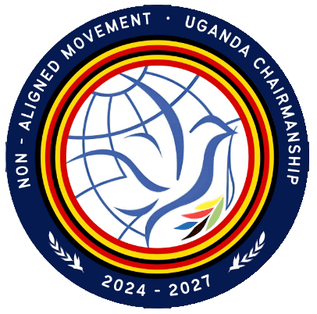By Badru Walusansa
Since the beginning of this week, Kampala – Uganda’s capital, has been host to over 120 international delegates attending the NAM Summit. This is the 19th NAM Summit under the chairmanship of Uganda for the next 3 years (2024-2027). It’s no doubt NAM has significantly influenced international peace and security. Hasten to say, its members have been pivotal in championing nuclear disarmament resulting into establishment of nuclear free zones; condemning global terrorism and supporting peacekeeping and peace building missions executed by the United Nations.
At the ongoing summit, several delegates are mooting a plea for NAM to make a political declaration on the raging war in Gaza between Isreal and Hamas. However, this plea may contradict the principle of “mutual non-interference in domestic affairs” on which NAM is anchored. Furthermore, those against NAM may conclude that the above action is sheer display of double standards. It may be recalled that in February 2023 during the UN General Assembly, 35 countries including Uganda abstained from condemning Russia’s invasion of Ukraine.
But again the most fundamental concern that needs to be brutally underscored is the applicability of NAM’s principles in the ever-evolving global landscape. Whereas it’s true that NAM goes beyond a mere group of countries from the Global South, some of its principles, are far from the current global realities. For instance, NAM’s member States still believe in delinking ties from the West.
Delinking from the West theoretically sounds viable but impractical especially at the time when the World is now viewed as a Global village – although this doesn’t suggest that globalization is the panacea to the existing Global challenges. The West remains a major force in the economic development for many countries in the Global South. In the last so many decades, the Global South has especially been the largest recipient of financial infrastructure in form of loans and development aid from the West. To exemplify this, in June 2022, the G7 leaders pledged to raise $600 billion in private and public funds over five years to finance needed infrastructure in developing countries. For as long as this trend continues, NAM’s de-westernization ideology will remain futile.
For a long time, the Global South has continuously apportioned blame on the West for colonialism and neo-colonialism which later precipitated underdevelopment. Of course the framers of NAM, despite their good intentions, never escaped from the above polarized narrative. In fact the colonial narrative has to some extent been watered down by various internal factors such as bad governance and corruption that have continued to undermine development of the Global South.
As a matter of fact, economic blocs have proved to be strong levers of geopolitics. The emergency of the BRICs with favorable rules of engagement as opposed to the West is likely to compromise the NAM spirit. Arguably, there is already a visible shift by the Global South to work with the BRICs to foster a multipolar world. This implies that in the coming years, the Global South will be seen to cooperate more with the BRICs in advancing their economies and definitely this will be interpreted otherwise by the West given its decades-long cooperation with the Global South.
It’s therefore safe to suggest that NAM is a good outfit that cannot survive in the current global architect. To say the least, NAM’s existence on the global scene might not go beyond the usual summits and conferences like the one currently happening in Kampala. This is rightly so because no country can afford to be a spectator in such a highly globalized world.
The Author is a Policy Analyst at Development Eye Initiative (DEI)


